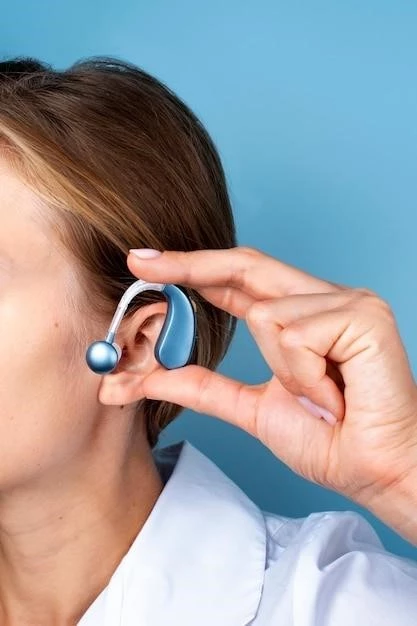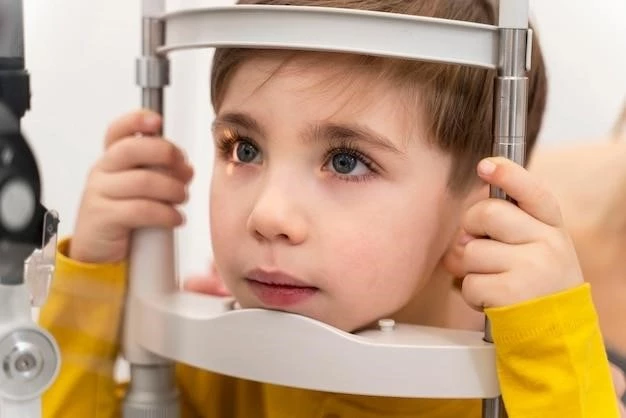Disease ‒ Deafness Conductive Stapedial Ear Malformation Facial Palsy
Deafness can encompass a range of auditory system disorders, including conductive hearing loss due to stapes bone issues. Ear deformities such as stapedial ear malformation can contribute to hearing impairment. Additionally, facial nerve injury can lead to paralysis, impacting quality of life significantly. Understanding these conditions is crucial for accurate diagnosis and treatment.
Introduction
Hearing loss is a widespread health concern that can manifest in various forms, including conductive hearing loss and stapedial ear malformations. Conductive hearing loss typically stems from issues in the middle ear, such as problems with the stapes bone, affecting the transmission of sound waves. Stapedial ear malformation refers to abnormalities in the structure of the stapes bone, a vital component in the auditory system’s mechanics.
Facial palsy, characterized by facial nerve injury leading to paralysis, is another condition that can significantly impact an individual’s well-being. The facial nerve plays a crucial role in controlling facial expressions, taste sensation, and tear production. When this nerve is injured or damaged, it can result in various degrees of facial weakness or paralysis.
Understanding the complexities of these conditions is paramount in providing effective diagnosis and treatment. Hearing impairment and facial paralysis can have profound effects on an individual’s quality of life, underscoring the importance of early detection and intervention. This article delves into the causes, diagnosis, treatments, and advancements in managing deafness, conductive hearing loss, stapedial ear malformation, and facial nerve injury.
Understanding Hearing Loss
Hearing loss is a multifaceted condition that can be classified into different types based on the affected part of the auditory system. Conductive hearing loss occurs when sound waves are not adequately transmitted through the outer or middle ear to the inner ear. This can be caused by issues such as a malfunctioning stapes bone, earwax buildup, or fluid in the middle ear.
Stapedial ear malformation, a specific form of conductive hearing loss, involves structural abnormalities in the stapes bone. The stapes bone is the smallest bone in the human body and plays a crucial role in transmitting sound vibrations to the inner ear. Malformations in this delicate bone can disrupt the sound conduction process, leading to hearing impairment.
It is essential to differentiate between conductive hearing loss, sensorineural hearing loss, and mixed hearing loss, as each type requires a specific approach to diagnosis and treatment. Conductive hearing loss can often be addressed through medical or surgical interventions, depending on the underlying cause, while sensorineural hearing loss may necessitate hearing aids or cochlear implants.
Understanding the mechanisms of hearing loss, including how sound is processed through the auditory system and transmitted to the brain, is crucial for healthcare providers to devise effective management strategies. Patients with hearing impairments require a comprehensive evaluation to determine the most appropriate treatment modality for their specific condition, whether it be conductive, sensorineural, or mixed hearing loss.

Causes of Conductive Hearing Loss
Conductive hearing loss, particularly attributed to stapedial ear malformation, can stem from various underlying causes that interfere with the transmission of sound waves through the ear. One of the primary causes is abnormalities in the stapes bone, such as congenital malformations or injuries that affect its ability to conduct sound vibrations effectively.
Other common causes of conductive hearing loss include middle ear disorders like otitis media, where inflammation or fluid buildup impairs sound conduction, and otosclerosis, a condition characterized by abnormal bone growth around the stapes bone. These conditions can disrupt the movement of the ossicles in the middle ear, leading to decreased sound transmission.
External factors like earwax impaction, foreign objects in the ear canal, or a perforated eardrum can also result in conductive hearing loss by obstructing the normal pathway of sound waves. In some cases, a traumatic injury to the ear can damage the delicate structures involved in sound conduction, causing a temporary or permanent loss of hearing.
Diagnostics play a crucial role in identifying the specific cause of conductive hearing loss, allowing healthcare providers to tailor treatment plans accordingly. Treatment options may include medications to address infections, surgical interventions like stapedectomy to repair the stapes bone, or hearing aids to amplify sound for better conduction through the ear canal.
Facial Nerve Injury and Paralysis
Facial nerve injury, leading to paralysis, poses significant challenges for individuals as it affects various facial functions controlled by the facial nerve. The facial nerve, also known as cranial nerve VII, is responsible for facial expressions, taste sensation on the front of the tongue, tear production, and the function of the stapedius muscle within the middle ear.
Facial nerve injuries can result from trauma, infections like Bell’s palsy, tumors compressing the nerve, or iatrogenic causes during surgeries in the head and neck region. Depending on the location and extent of the injury, facial paralysis can range from mild weakness to complete loss of movement on one side of the face.
Symptoms of facial nerve injury and paralysis include drooping of the eyelid and corner of the mouth, drooling, impaired speech, and difficulty closing the eye on the affected side. Patients may also experience changes in taste sensation or hyperacusis, a heightened sensitivity to sound due to the involvement of the stapedius muscle in dampening loud noises.
Management of facial nerve injury involves a multidisciplinary approach, including neurologists, otolaryngologists, facial plastic surgeons, and physical therapists. Treatment options may include medications to reduce inflammation, surgery to repair nerve damage or decompress the nerve, and facial reanimation procedures to restore symmetry and function to the face.
Diagnosis and Treatment
Diagnosing conditions related to deafness, conductive hearing loss, stapedial ear malformation, and facial palsy requires a comprehensive evaluation by healthcare professionals with expertise in auditory and facial nerve disorders. Various diagnostic tests may be employed to pinpoint the underlying causes and determine the extent of impairment.
For conductive hearing loss and stapedial ear malformations, diagnostic procedures can include audiometry tests to assess hearing sensitivity, tympanometry to evaluate the middle ear’s function, and imaging studies like CT scans or MRI to visualize the intricate structures of the ear. These tests help identify issues with the stapes bone, ossicles, or other middle ear components.
In cases of facial nerve injury and paralysis, clinicians may conduct electromyography (EMG) to measure the electrical activity of muscles affected by the facial nerve. Additionally, imaging studies like MRI or CT scans can reveal any compressive lesions or abnormalities along the course of the facial nerve, aiding in accurate diagnosis and treatment planning.
Treatment options for these conditions vary depending on the underlying cause and the severity of symptoms. Conductive hearing loss may be managed through surgical interventions, such as stapedectomy to repair the stapes bone, or the use of hearing aids to improve sound conduction. Sensorineural hearing loss may require cochlear implants or bone-anchored hearing devices.
Facial nerve injuries may be addressed through conservative measures like physical therapy to strengthen facial muscles, medications to reduce inflammation, or surgical procedures to repair nerve damage. Facial reanimation surgeries, involving nerve grafts or muscle transfers, may be considered for severe cases of facial paralysis to restore facial symmetry and function.
Impact on Quality of Life
The conditions of deafness, conductive hearing loss, stapedial ear malformation, and facial palsy can have profound effects on an individual’s quality of life. Hearing impairment can lead to communication difficulties, social isolation, and challenges in academic or professional settings. Conductive hearing loss, specifically due to stapedial ear malformations, may impact sound conduction, affecting an individual’s ability to perceive and interpret auditory information accurately.
Facial palsy resulting from facial nerve injuries can significantly impact a person’s self-esteem, emotional well-being, and social interactions. The inability to express emotions through facial expressions, difficulties with speech articulation, and changes in taste sensation can all contribute to diminished quality of life for individuals affected by facial paralysis.
Moreover, these conditions can affect various aspects of daily living, including personal relationships, work performance, and mental health. Individuals with hearing impairments or facial nerve injuries may experience heightened levels of stress, anxiety, and depression, further exacerbating the challenges they face in their day-to-day lives.
Addressing the impact of these conditions on quality of life requires a holistic approach that encompasses medical interventions, rehabilitation, counseling, and support services. By providing comprehensive care that addresses both the physical and emotional aspects of these conditions, healthcare providers can help individuals with deafness, conductive hearing loss, stapedial ear malformations, and facial palsy better manage their conditions and enhance their overall well-being.
Prevention and Management
Preventing conditions related to deafness, conductive hearing loss, stapedial ear malformation, and facial palsy involves a combination of lifestyle modifications, early detection, and appropriate interventions. While some causes of these disorders, such as congenital malformations, may not be preventable, certain measures can help mitigate the risk factors associated with these conditions.
Regular screenings and check-ups can aid in the early detection of hearing impairments, allowing healthcare providers to intervene promptly and prevent further deterioration of auditory function. For individuals at risk of conductive hearing loss due to stapedial ear malformations, maintaining ear hygiene and avoiding exposure to loud noises can help safeguard against potential complications.
Facial nerve injuries leading to paralysis may be prevented by taking precautions during activities that pose a risk of head or neck trauma, such as sports or work-related tasks. Prompt treatment of infections affecting the facial nerve, like Bell’s palsy, can also reduce the likelihood of long-term nerve damage and associated paralysis.
Management of these conditions involves a tailored approach that addresses the specific needs and symptoms of each individual. Patients with conductive hearing loss may benefit from hearing aids, implants, or surgical procedures to improve sound conduction. Facial nerve injuries and paralysis may require a combination of medications, physical therapy, and surgical interventions to restore facial function.
Supportive care, including counseling, speech therapy, and rehabilitation services, is essential for individuals affected by these conditions to cope with the physical, emotional, and social challenges they may encounter. By promoting awareness, early intervention, and comprehensive care, healthcare providers can enhance prevention efforts and improve the management of deafness, conductive hearing loss, stapedial ear malformation, and facial palsy.
Research and Advancements
Ongoing research and technological advancements continue to drive progress in the understanding and treatment of conditions related to deafness, conductive hearing loss, stapedial ear malformation, and facial palsy. Researchers are exploring innovative approaches to diagnosis, treatment, and rehabilitation to enhance outcomes for individuals affected by these disorders.
In the realm of conductive hearing loss, advancements in surgical techniques, such as minimally invasive procedures for stapedial ear malformations, offer improved outcomes with reduced risks and recovery times. Researchers are also investigating novel biomaterials and prosthetic devices to restore hearing function in cases where traditional interventions may not be feasible.
Facial nerve research focuses on nerve regeneration, neuroprotection, and targeted drug therapies to enhance nerve function and promote recovery in cases of facial palsy. Emerging technologies, such as facial reanimation techniques utilizing nerve transfers or muscle grafts, show promise in restoring facial symmetry and expression in individuals with severe nerve injuries.
Advancements in imaging technology, including high-resolution CT scans and MRI, enable healthcare providers to visualize intricate structures within the ear and along the course of the facial nerve with enhanced precision. This allows for better planning of surgical interventions and more accurate diagnosis of underlying pathologies.
Clinical trials and collaborative research efforts aim to develop customized treatment approaches tailored to individual patient needs, considering factors such as age, severity of symptoms, and underlying medical conditions. The integration of personalized medicine and multidisciplinary care models holds great potential for optimizing outcomes in the management of these complex conditions.
By fostering collaboration between medical professionals, researchers, and industry innovators, the field of deafness, conductive hearing loss, stapedial ear malformation, and facial palsy continues to evolve, offering new hope and possibilities for individuals affected by these challenging disorders.
